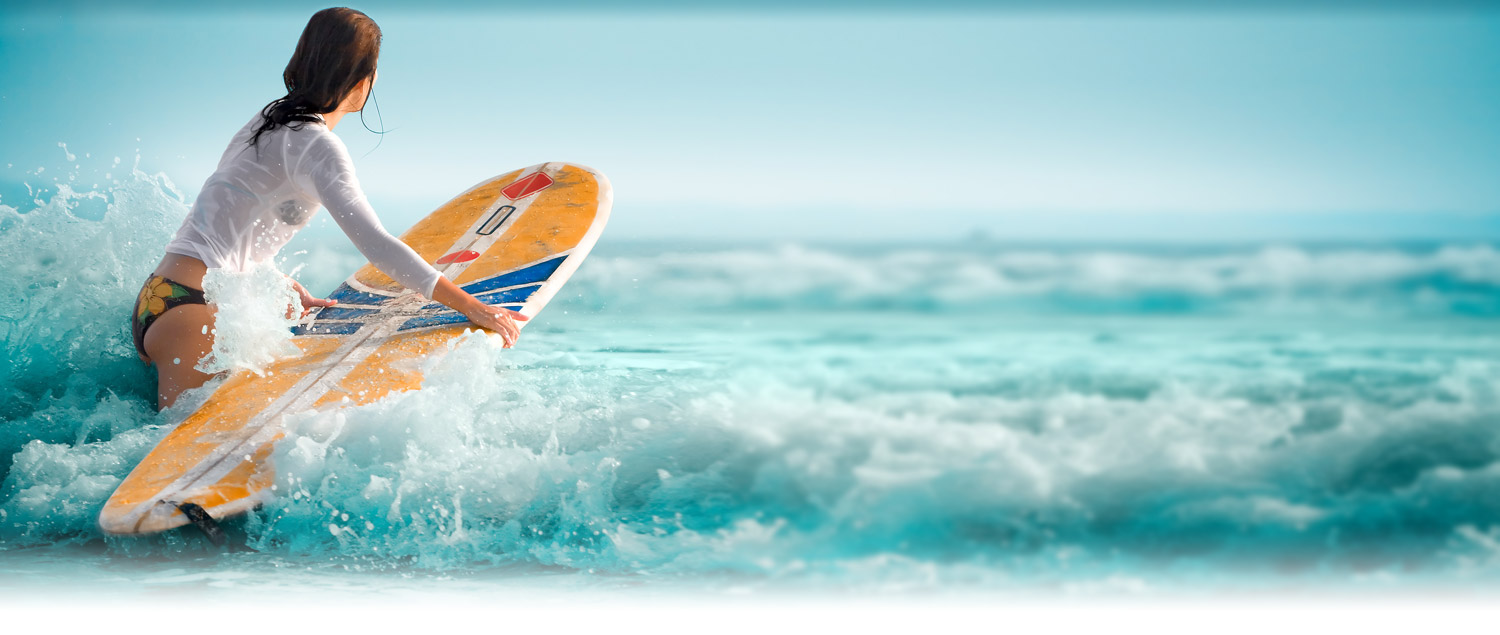How to Make the Most of Your Surf Lessons in Hawaii
 A trip to Hawaii is scarcely complete without a surf lesson or three. With hundreds of miles of coastline and year-round sunshine, the 50th state provides clear water, sand and reef bottoms, and all the “cowabunga” any surfer could ever hope for. After all, the sport of surfing originated in the beautiful Hawaiian Islands. Many coastal towns in Hawaii offer tourist-friendly surfing schools that welcome anyone willing to learn, from brand-new wave riders to seasoned surfers.
A trip to Hawaii is scarcely complete without a surf lesson or three. With hundreds of miles of coastline and year-round sunshine, the 50th state provides clear water, sand and reef bottoms, and all the “cowabunga” any surfer could ever hope for. After all, the sport of surfing originated in the beautiful Hawaiian Islands. Many coastal towns in Hawaii offer tourist-friendly surfing schools that welcome anyone willing to learn, from brand-new wave riders to seasoned surfers.
Waves in Hawaii are not the same as waves anywhere else in the world
Surf lessons aren’t just for newbies, either. Anyone who’s not entirely experienced in Hawaiian wave riding is bound to benefit from one or more surf lessons before paddling out in local waters. Surfers accustomed to easy shore breaks in California are often amazed at the “juice,” or power of island waves. Learn a few simple tips beforehand, and your surfing lessons are sure to go smoothly.
What to bring to your surf lesson
Pack plenty of sunscreen and don’t forget to use it on the day of your surf lesson. Wear a neoprene reef guard wetsuit jacket with short sleeves. It will protect your tender belly from the rough waxy deck of the surfboard.
To get the most out of your surf classes, be sure to select a board that suits your height and weight. Beginners should opt for a thick, wide board that offers plenty of stability and flotation. A long foam board can be just right for a novice surfer. Beginner boards are designed to float just about anyone, and the last thing they are built for is speed.
Hang loose and take your time
Don’t expect to be a hotdog trick surfer on your first day in the water. First, you’ll learn to balance while sitting on a surfboard. Then you’ll learn to paddle in a prone position. Old-school longboard riders paddled in a kneeling position, so you may wish to learn that technique, too, if you intend to ride wave on a big gun board.
Most newbies learn how to catch their first small wave while lying prone on a board in the foam break. You probably won’t be able to stand up your first few tries, but don’t give up. Kahalu’u Bay Surf & Sea said, “Trust your surf coach to give you their very best advice.” With dedication and practice, a reasonably adept athlete can learn to ride waves in around 25 hours, says Surfer Today magazine.
Hawaiian surf etiquette
If you’re not from Hawaii, and you’re going to enter the po‘ina nalu, or surf zone, there are a few rules of wave-rider courtesy that you should always follow. In fact, surfer etiquette as described in The Surfing Handbook is the right way to go at virtually any surf break around the globe.
- Wear a leash always and don’t ever ditch your board.
- Watch the waves awhile before entering the water.
- Don’t paddle your board directly through the center of the lineup.
- The surfer closest to the peak of the wave has the right of way, even on a left.
- Never “snake” around a fellow surfer to obtain a better position.
- Never surf alone.
- Avoid surfing at dusk to reduce the chance of shark encounters.
- Respect the beach and take out what you brought in.
- Never drop in on someone else’s wave.
The last rule mentioned above is worth mentioning twice. Dropping in and stealing a wave is akin to a sin in Hawaii. Wave hogging is considered nearly as bad, especially when done by someone the local crowd of surfers doesn’t know. A smile and a friendly attitude of aloha can go a long way toward soothing tensions at local surf breaks.
If you want to become a surfer, Hawaii is the perfect place to learn. Try your beginner’s luck at Kahalu’u Beach Park on the Big Island, or learn to ride waves at Kawela Bay or Waikiki on the island of Oahu. On Maui, Kihei Beach and Launiupoko State Beach offer small breaks and smooth rides. Lemon Drops on the south shore of Kauai is a popular surf beach for beginners.

















